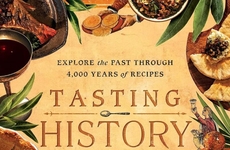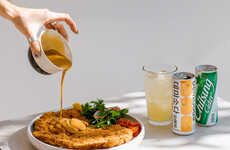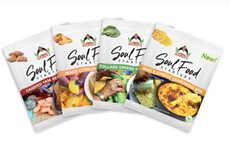
Adrian Miller's Graphics Explain the History of Soul Food
References: maxschieblemuseum.squarespace & firstwefeast
Adrian Miller creatively explains the history of Soul food with the help of illustrator Max Schieble's colorful graphics that showcase the culture and cuisine in an enjoyable way. This innovative approach helps to paint a historical illustration of how Soul culture and cuisine came into fruition.
Soul food is based around an eclectic mix of influences from South American cuisine to American culture and African decent. Miller explains how Soul food began with these whimsical cartoon illustrations filled with technicolor graphics. The images showcase where the food originated from, who helped bring it together and the political ties that all helped to make the cuisine such a staple in food today. The graphics showcase various moments in history as well, from the early 1610s to the present day.
Soul food is based around an eclectic mix of influences from South American cuisine to American culture and African decent. Miller explains how Soul food began with these whimsical cartoon illustrations filled with technicolor graphics. The images showcase where the food originated from, who helped bring it together and the political ties that all helped to make the cuisine such a staple in food today. The graphics showcase various moments in history as well, from the early 1610s to the present day.
Trend Themes
1. Historical Food Culture Illustrations - Illustrators can create graphic illustrations that explain the history and cultural significance of different cuisines and dishes.
2. Multicultural Food Curation - Curating and fusing various cuisines from different cultures can create new and unique culinary experiences.
3. Interactive Food History Education - Creating interactive education programs and exhibitions can help people engage with the history and culture of different cuisines.
Industry Implications
1. Food and Beverage - The food and beverage industry can use historical food culture illustrations to educate customers and increase the cultural appreciation of their products.
2. Museums and Exhibitions - Museums and exhibitions can utilize interactive food history education for a unique and engaging sensory experience.
3. Art and Design - The art and design industry can collaborate with the food industry to create unique packaging and branding that tells the story of the food's cultural significance.
2.2
Score
Popularity
Activity
Freshness























